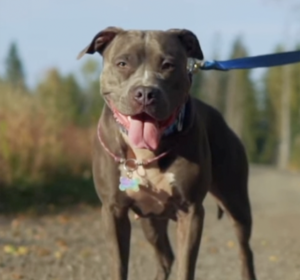Prior Vicious or Dangerous Propensities
 The victim of a canine attack in Pennsylvania need only do a few Google searches to realize: the attack survivor must often prove negligence to recover money for a dog bite in PA.
The victim of a canine attack in Pennsylvania need only do a few Google searches to realize: the attack survivor must often prove negligence to recover money for a dog bite in PA.
This often means, the victim needs proof that the dog owner (or person “harboring” the dog) had either: one, carelessly failed to control the animal (or let it run “at large.”). Or, the person responsible for the animal had disregarded the dog’s prior vicious or dangerous propensities.
Here, we’ll focus on the latter.
Prior Vicious or Dangerous Propensities
In Freeman v. Terzya, 229 Pa.Super. 254, 323 A.2d 186 (1974), the Superior Court of Pennsylvania opined:
No matter how innocent the victim may be or how serious the injury sustained, the owner of the dog is not responsible for the consequences of the dog’s bite if he has no reason to know the viciousness or dangerous propensities of the dog beforehand: Andrews v. Smith, 324 Pa. 455, 188 A. 146 (1936).
The So-Called “One Free Bite” Rule
At one point in Pennsylvania, the courts refused to treat a canine as “dangerous” until after it had actually bitten someone. Thus, there was no liability for the first bite. This was the so-called “one free bite” rule, which no longer exists. In fact, a 1996 Amendment to PA’s Dog Law abolished the “one free bite” rule. In Commonwealth v. Hake, 738 A.2d 46, 1999 Pa.Cmwlth.Lexis 714 (Sept. 8, 1999), appeal denied, 561 Pa. 679, 749 A.2d 473 (2000), an appellate court concluded that:
[T]the propensity to attack may be proven by a single incident of the infliction of severe injury or attack on a human being, clearly finding a `propensity’ to attack human beings by virtue of the attack in question, even if it is only the first attack. … The 1996 amendments effectively removed the previous “one free bite” interpretation [of the Dog Law] and the Statute now permits liability for the dog’s first bite.”
The same conclusion was reached in Underwood ex rel. Underwood v. Wind, 954 A.2d 1199, 2008 P.A. Super 158 (Pa. Super. Ct. 2008): the one free bite rule no longer exists in PA.
The Various Modern Ways to Show Vicious or Dangerous Propensities
Today, numerous things create knowledge of the dog’s prior viciousness or dangerous propensities. These include (1) complaints brought to the owner’s attention; (2) fighting with other dogs; (3) frequent confinement of the dog; (4) warning signs on the owner’s premises; and (5) statements by the owner as to the dog’s character. Allen v. Tanchuk, 11005 OF 2007, 2009 WL 6477035 (Pa. Com. Pl. Nov. 10, 2009) (citing Proof of Facts 2d, vol. 13, p. 473) see also Sheptak v. Wagner, 23 Pa. D. & C.3d 46, 48 (Pa. Com. Pl. 1982) and Snyder v. Milton Auto Parts, Inc., 285 Pa. Super. 559, 562, 428 A.2d 186, 188 (1981).
Moreover, the mere history of a dog jumping up on people — playfully — could constitute a “dangerous propensity” to attach liability. “The law makes no distinction between an animal dangerous from viciousness and one merely mischievous or dangerous from playfulness, but puts on the owner of both the duty of restraint when he knows of the animal’s propensities.” Rowe v. Landvater, 27 Pa. D. & C.4th 380, 383 (Com. Pl. 1994) citing Groner v. Hedrick, 403 Pa. 148, 169 A.2d 302 (1961). Landvater, supra, explains that “the tendency of the defendants’ dog to jump up on people, regardless of why the dog did so, put the defendants on notice of [a] vicious propensity.”
Recent Case Law Examples of Vicious Propensities
In BAYBROOK v. Bologna, No. 331 WDA 2022 (Pa. Super. Ct. Sept. 7, 2022), the trial court dismissed a dog bite case, for lack of proof of dangerous propensities. The Superior disagreed and overturned the trial court’s decision, noting:
During [the dog owner’s] deposition, [the injured party’s] counsel asked her whether the dog had any prior incidents where she got nasty with anyone, and she replied, “Well, when we would take walks, she wouldn’t go up to people. And she didn’t like when people came up to her.” N.T. Deposition, 10/5/21, at 7.
Further, when asked if she put up the “Beware of Dog” signs because [the dog] was a pit bull, the [dog owner] said, “That, and any dog. Yes.” Id. at 15.
She also testified that when the dog was outside, package delivery drivers would not get out of their vehicles. Id. at 9-10
Requirement of Affirmative Evidence of “Dangerous Propensities”
Notwithstanding the above, a court will dismiss a claim for liability — based on a dog’s alleged “dangerous propensity” — where the evidence is lacking. For example, proof that a dog had been nervous previously at the vet — by itself — is not sufficient, since nearly all dogs get nervous at the veterinarian. Likewise, the breed of dog — alone — does not prove the owner’s knowledge of “prior dangerous propensities,” unless the particular dog has acted aggressively, in the past.
Let’s Get Started!
Contact a Pittsburgh lawyer for a free consultation today!
412.400.5476